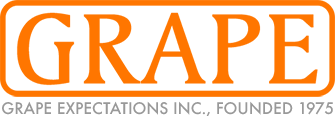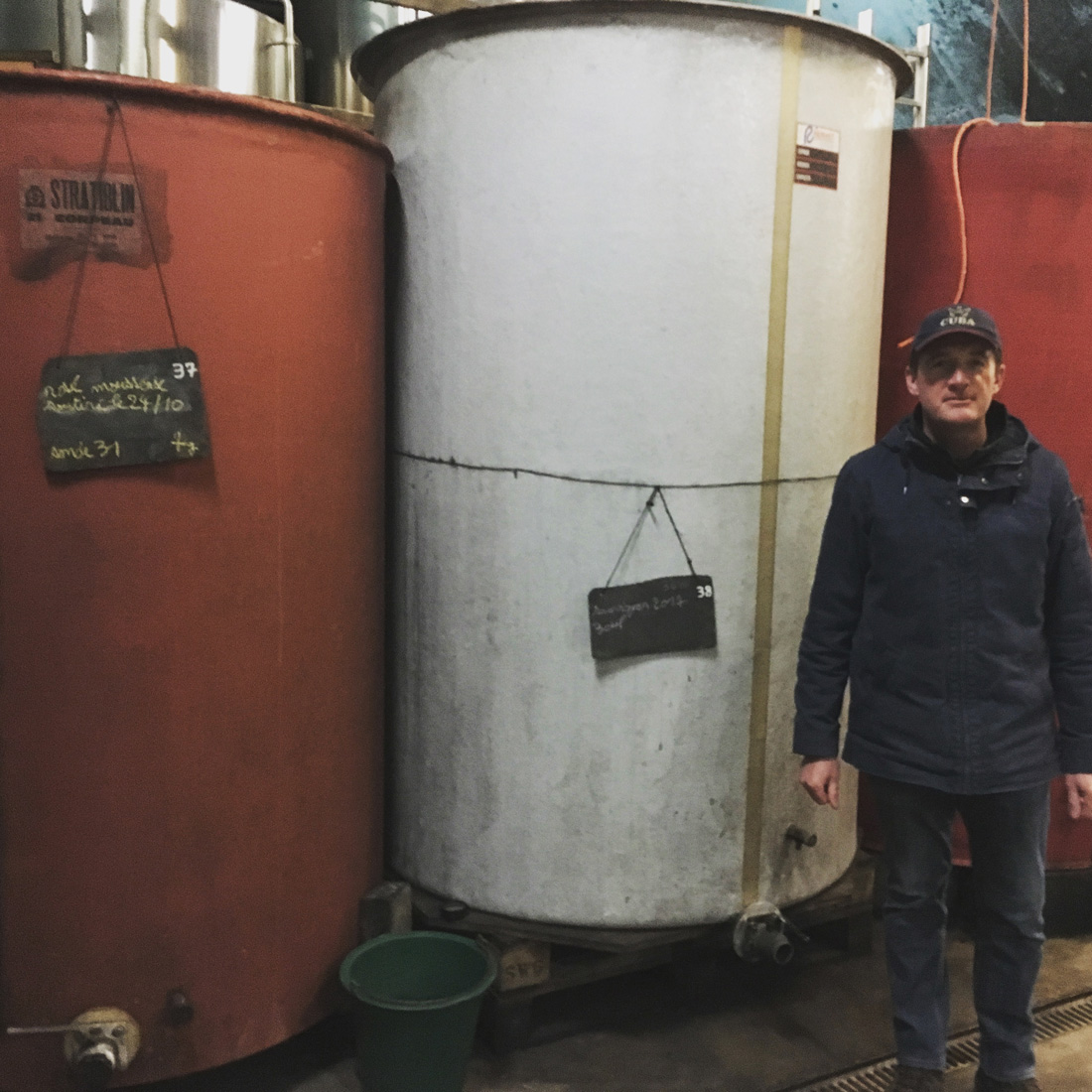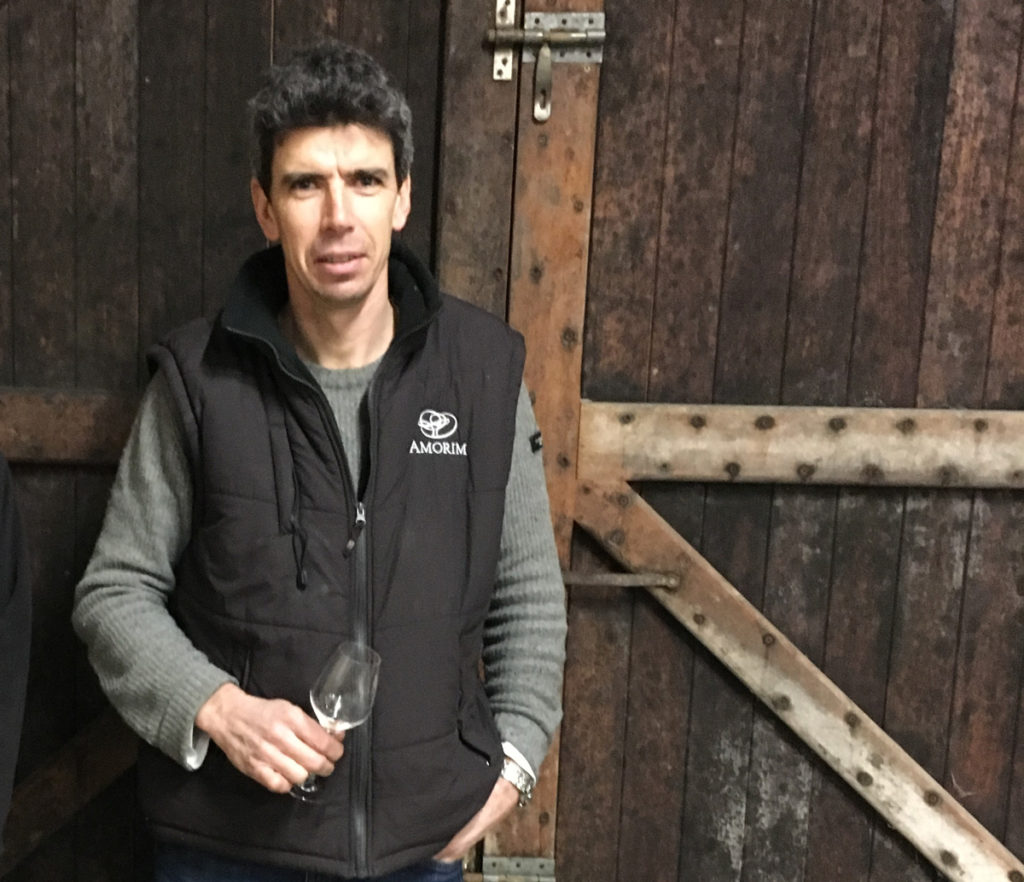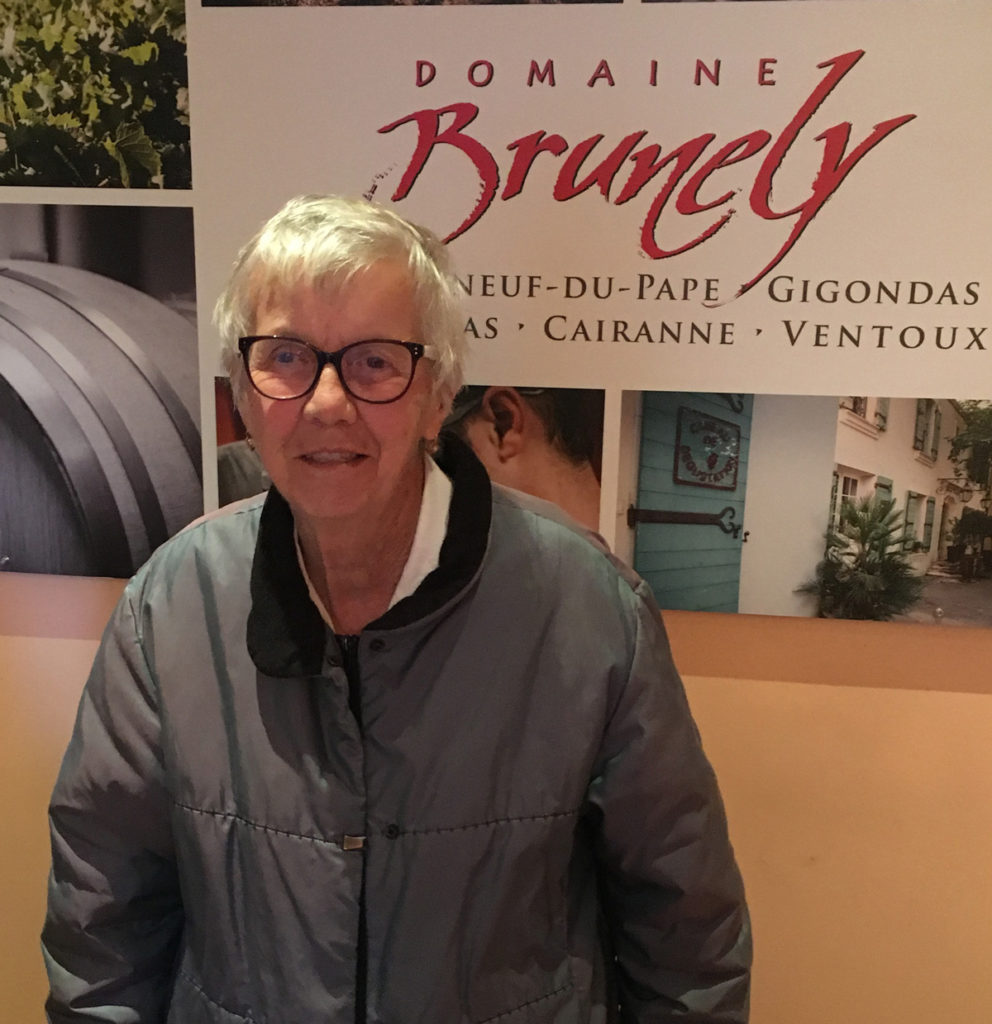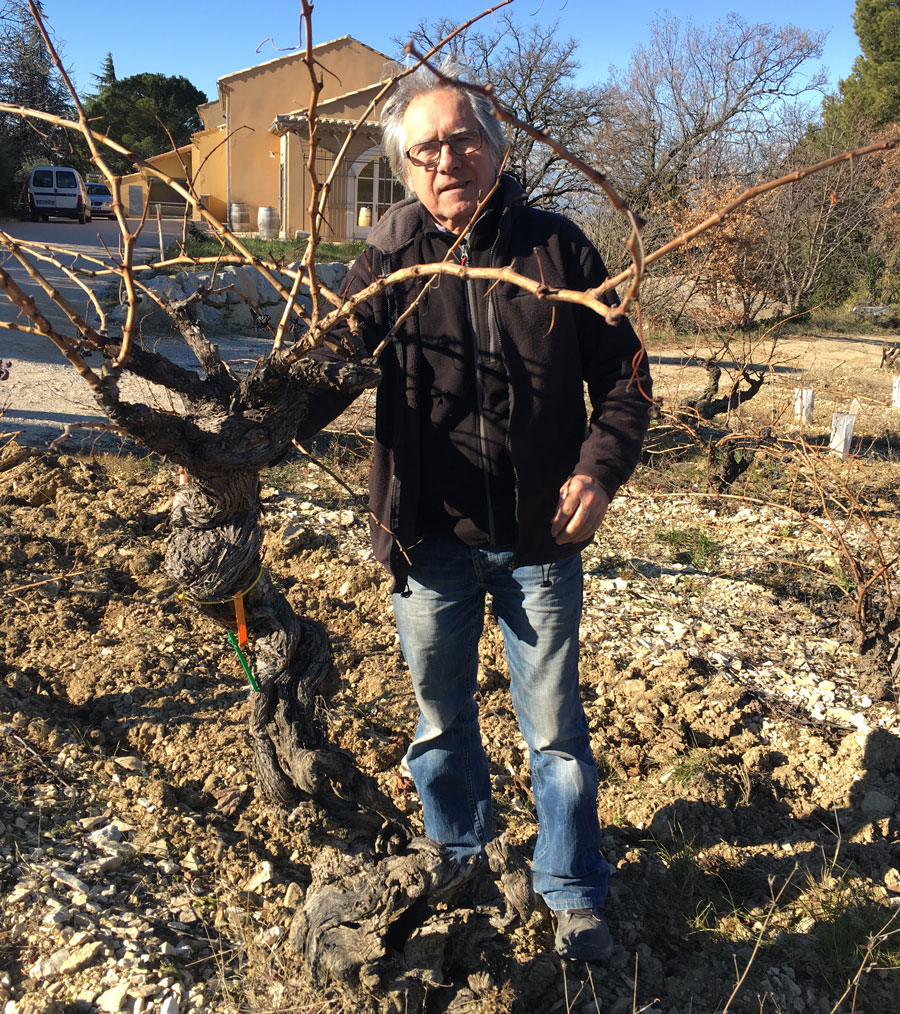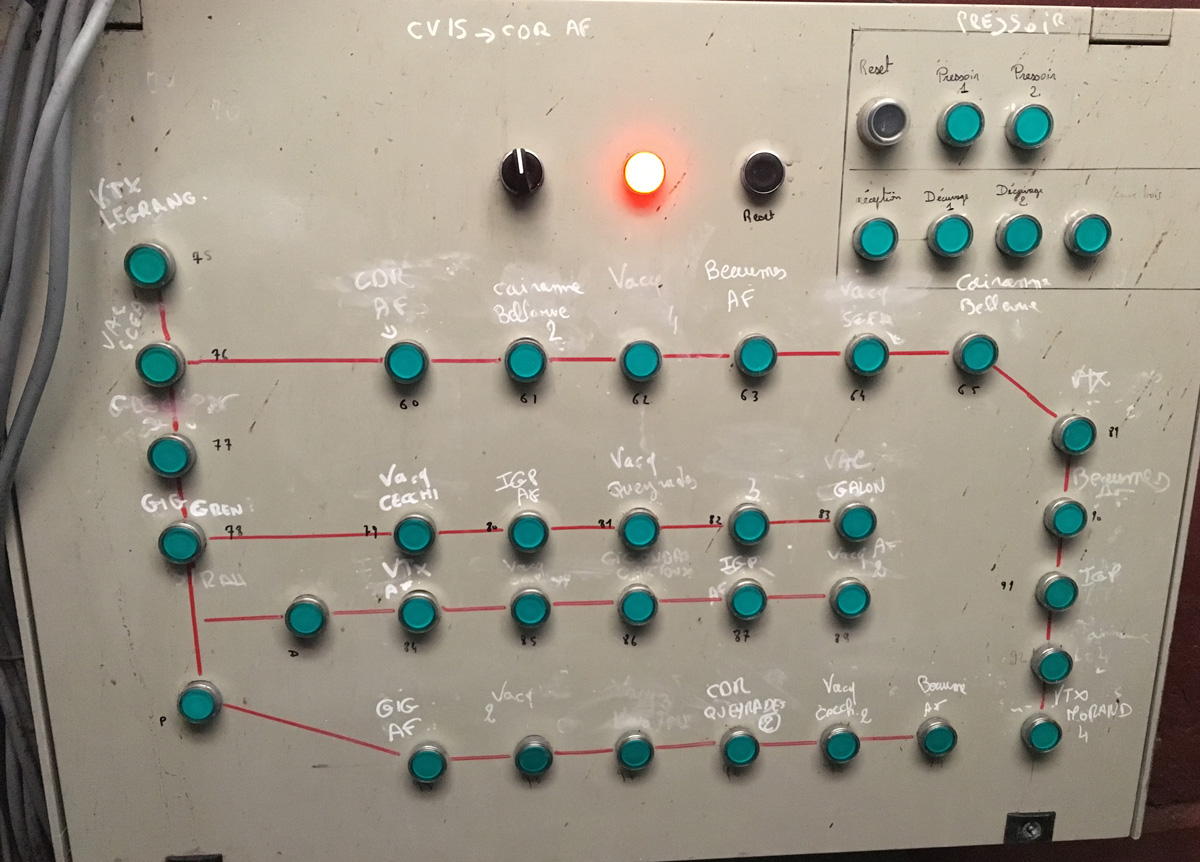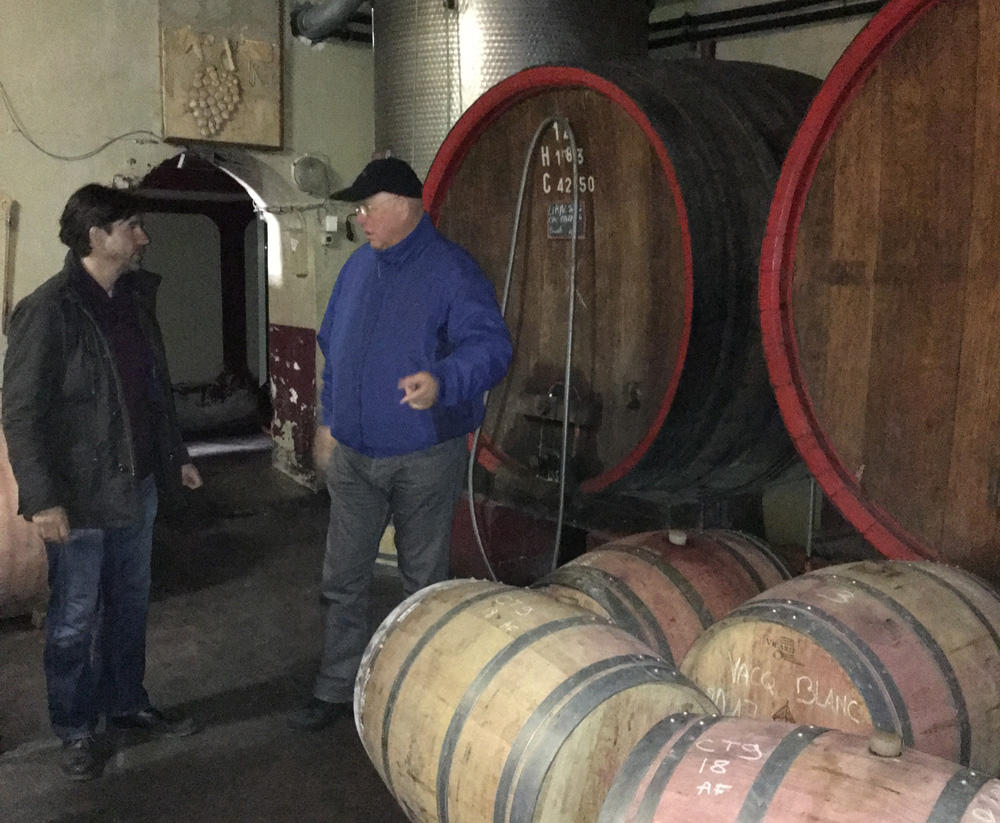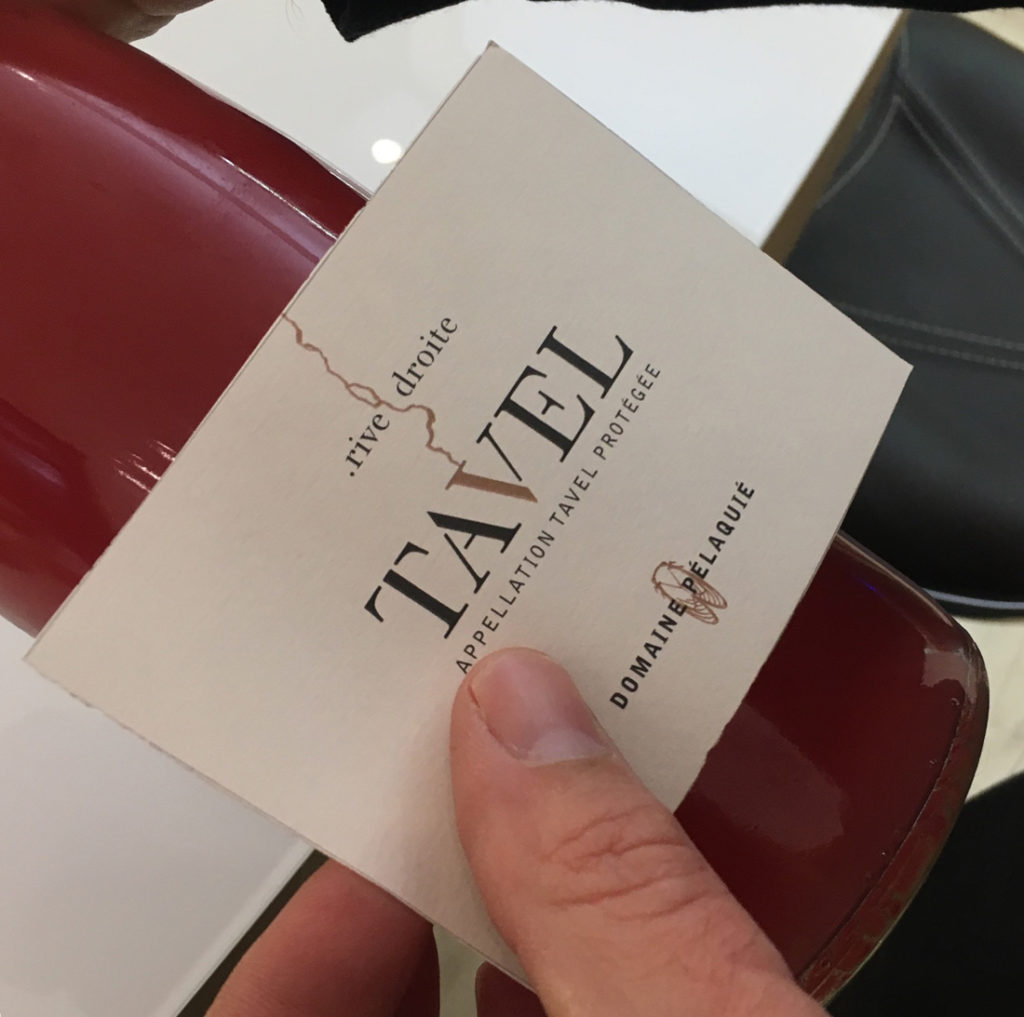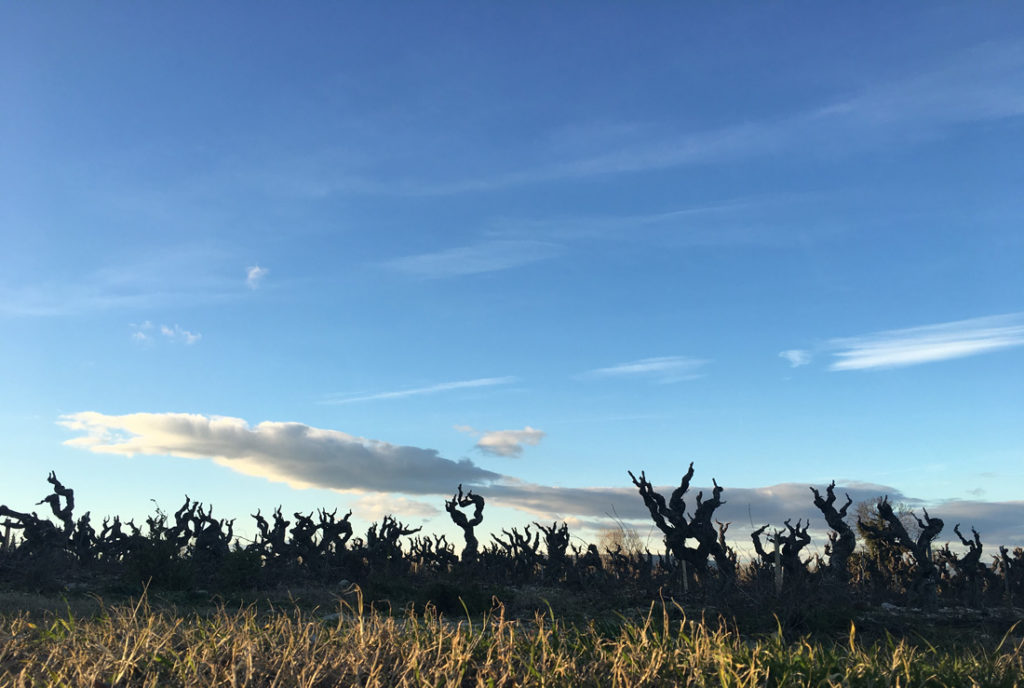We keep things going on day two in the Rhône…
Domaine Notre Dame des Pallières
Domaine Notre Dame des Pallières is a very old family estate, whose name comes from a place of pilgrimage visited by the Provençal people in the middle ages who believed that the fountain on the property would protect them from the plague. Claude Roux and his cousin Jean-Pierre have so many generations of Gigondas wine making experience in their family that they don’t know exactly how many of their relatives have been involved up to now – Antique writings suggest that this Domaine existed as far back as the 900’s. Fortunately this tradition is continuing with Claude’s children, Isabelle and Julien, who are gradually taking over the day to day responsibilities of farming, production, and administration. Vineyard holdings total 74 acres in Gigondas, Sablet, and Cotes du Rhone and the winery is based in the center of their principal vineyard holding, a field of very old vines (mainly Grenache, many up to 110 years in age). This is a particularly interesting sub-site in Gigondas as it is set in a protected valley underneath the shadows of the iconic Dentilles de Montmirail. This means stronger and longer cooling winds versus other top estates in the region, which means more freshness in the finished wine. Even when you are driving up, you know you are rolling into something special:
Domaine Notre Dame des Pallières 17 Sablet Blanc “Montmartel,” open knit, tremendous purity, wish Sablet Blanc was easier to sell!
Domaine Notre Dame des Pallières 18 Cotes du Rhone, full, rich and unbelievably ready to go, good pedigree, this is mostly declassified Gigondas (!)
Domaine Notre Dame des Pallières 17 Sablet Rouge “Montmartel,” garrigue driven, higher % of Syrah gives this pepper notes and thick tannin, what a value
Domaine Notre Dame des Pallières 17 Lirac “Les Pellegrin” (tank), lots of CO2, need to taste finished wine
Domaine Notre Dame des Pallières 16 Rasteau “Les Ribes,” topsoil here is salmon orange from iron content, concentrated, very rustic example
Domaine Notre Dame des Pallières 17 Gigondas “Les Mourres,” dark, big, fat, integrated, lots to like here!
Domaine Notre Dame des Pallières 16 Gigondas “Bois de Mourres,” deep, tremendous concentration, still some obvious barrel flavors up front, we wonder what this would be like without the wood influence as the vine material is so good it is almost unheard of.
The highlights here, as usual, were the Cotes du Rhone, Sablet Rouge “L’Olivet,” the Cotes du Rhone, and the Gigondas “Les Mourres,” – All are naked examples of their kind and just screaming for the rustic bistro-like fare most of you enjoy making and devouring at home.
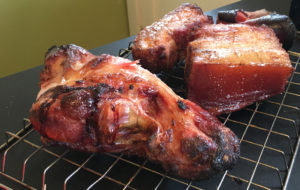
…or you could make your life easy and just drink it with giant fatty chunks of smoked pork jowl and back fat!
Domaine de la Charbonnière
Veronique Maret led us through an energizing “breakfast” of new and upcoming releases. Veronique is young, serious in the best way, and stacked with ambition. In her young but very capable hands this remains a traditional estate, and she has converted all of the Domaine’s farming to organic practices. The “entry level” CDP is outstanding, individual CdP cuvées are produced from the best blocks of the family’s best plots, and a sappy vielles Vignes blend is not to be missed in any vintage – in 15/16/17, as it contains a lot of Grenache from the La Crau vineyard in it, and as you likely know (unless you live under a bus) La Crau is one of the best individual plots in the entire appellation. We’ve had a stellar string of vintages here, let’s review them real quick as we have 2015 here and upcoming vintages allocated to us for shipment…The 2015 vintage is very good, typical warm year, the wines are a little closed now, should be better after a trip across the water. For us 2016 is better, more color, more elegant and a spicy character. The 2017’s are outstanding, dark, fat, polished and tons of fruit. This is mostly because of the small crop and the good growing season in CDP.
Domaine de la Charbonnière 17 Chateauneuf du Pape Blanc, ripe, rich, soft, benchmark
Domaine de la Charbonnière 16 Chateauneuf du Pape Blanc, fresher, pretty mature
Domaine de la Charbonnière 17 Vacqueyras, dark, typical, concentrated (there is only the straight V. in 17)
Domaine de la Charbonnière 17 Chateauneuf du Pape Rouge, concentrated, fruit, dark, full
Domaine de la Charbonnière 17 Chateauneuf du Pape “Mourre des Perdrix,” advanced, ripe, seems light
Domaine de la Charbonnière 17 Chateauneuf du Pape “Vieilles Vignes,” much better tight, concentrated
Domaine de la Charbonnière 17 Chateauneuf du Pape “Cuvee Hautes Brusquires,” focused, masculine, fruit
Domaine de la Charbonnière 16 Vacqueyras, dark, powerfull, tannic
Domaine de la Charbonnière 16 Vacqueyras “Cuvee Spéciale”, bigger, darker, dry now
Domaine de la Charbonnière 16 Chateauneuf du Pape Rouge, wonderfully balanced, full, typical
Domaine de la Charbonnière 16 Chateauneuf du Pape “Mourre des Perdrix, fine, fruit, soft
Domaine de la Charbonnière 16 Chateauneuf du Pape “Cuvee Hautes Brusquires,” More finesse than we’d expect from what is usually a “big” bottling, fresh
Domaine de la Charbonnière 16 Chateauneuf du Pape “Vieilles Vignes,”, focused, complete, concentrated
In an earlier tasting (Winter 2018) Frank thought 17 could be as good as 16 here, but our experience now indicates this may no longer be the case. Most of the 17’s are really good (you’ll all gush for them upon arrival in 18 months), but the 16’s are flawless, concentrated and balanced…They will
age well, but we would be tempted to drink them young. We will buy as deep as Verionique’s allocations allow, and smart merchants and somms will do the same!
Domaine Le Clos des Lumières
Domaine le Clos des Lumières is a 50 hectare family farm founded in 1946 by the grandfather of the domaine’s current vigneron, Gérald Serrano. The ambitious and talented Gérald Serrano is solely responsible for the recent “coming out” of this estate – Prior to taking things over in 2003 Gérald’s father was selling all grapes on the estate to the local cooperative. We had fun shooting VR pics with them, here is a look on Google Maps – They were intent on holding the pose which was basically perfect. The kid on the right? He is the newest generation, just started on the tractor, and you’ll get to know him well.
Having grown up on the property, Gérald is intimately familiar with the terroir here. The oldest vines now edge 60 years in age and this land really seems to “pack the character in.”. We’ve sold massive amounts of Rhone wine over the last forty years, and these are the most well-received Cotes du Rhone values we’ve carried in our history.
These guys seem to have a deep understanding of what’s going on in the vineyard and in the market, they are probably the hardest working partners we have, and as Frank will tell you it is pretty amazing to see how forward thinking they are. The potential here is huge, we have only scratched the surface. When they heard what we were up to last Spring in terms of the national expansion and the whole idea of “expecting some grapeness,” the Serrano family went out and bought another 70 acres of vineyard land, bringing their total holdings to 300 acres owned, plus substantial long term contracts. Between our two companies we have two parties ready to bring it!
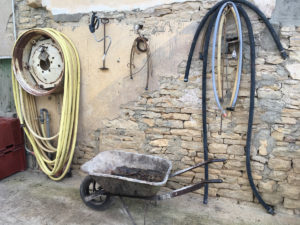
Barrows ‘n hoses!
Domaine Clos des Lumières 18 CDR Blanc, light, fresh, very good
Domaine Clos des Lumières 18 Chardonnay, full, round
Domaine Clos des Lumières 18 Viognier, a little low on aromatics, which to Frank is a good thing
Domaine Clos des Lumières 18 Caladoc Gris, fresh and fine, right color for Gris, 3.000L. available, which we reserved
Domaine Clos des Lumières 18 Caladoc Rosé, more flavor. Actually the same wine as the Gris, just a different part of the pressing
Domaine Clos des Lumières 18 Syrah Rosé, more structure, more acidity
Domaine Clos des Lumières 18 Grenache Rosé, typical, easy
Domaine Clos des Lumières 18 Petit Verdot, outstanding and interesting as there is little Petit Verdot and even less as Rosé. 9000L. available
Domaine Clos des Lumières 18 CDR Rosé, full and complex
Domaine Clos des Lumières 17 Petit Verdot, dark, tight, depth
Domaine Clos des Lumières 17 Marsalan,/Syrah, dark, ripe, tannin
Domaine Clos des Lumières 18 Merlot, dark, full, fruit, tannin. Outstanding
Domaine Clos des Lumières 18 Marsalan, dark, soft lovely. 10000L. available
Domaine Clos des Lumières 18 Syrah, dark, ripe, rich
Domaine Clos des Lumières 17 CDR, solid
Domaine Clos des Lumières 18 CDR BIB, fruity, easy
Domaine Clos des Lumières 16 CDR Autrefois, rustic, ok
Domaine Clos des Lumières 17 CDR Autrefois,, beter, more fruit and tannin
Domaine Clos des Lumières 18 CDR Autrefois, some reduction, should be fine
Domaine Clos des Lumières 16 CDRV, serious, a little mature
Domaine Clos des Lumières 17 CDRV, better now, concentrated
Domaine Clos des Lumières 18 CDRV, the best.
Domaine Clos des Lumières 18 CDR sans sulfites, good
Among the new wines we committed to the Gris (everything available, working on the label this week), a starting load of half CDR bottles (filling your requests my friends), and we are working on new bag in box package because anyone who knows me well knows of my hatred for Papyrus font (and the new package is looking sick so get ready for some full delivery trucks and empty shelves).
The no sulfur bottling of CDR showed well – We will test some in the elements here in the US, and if it fails to referment or go wild on us you’ll be seeing that as well.
